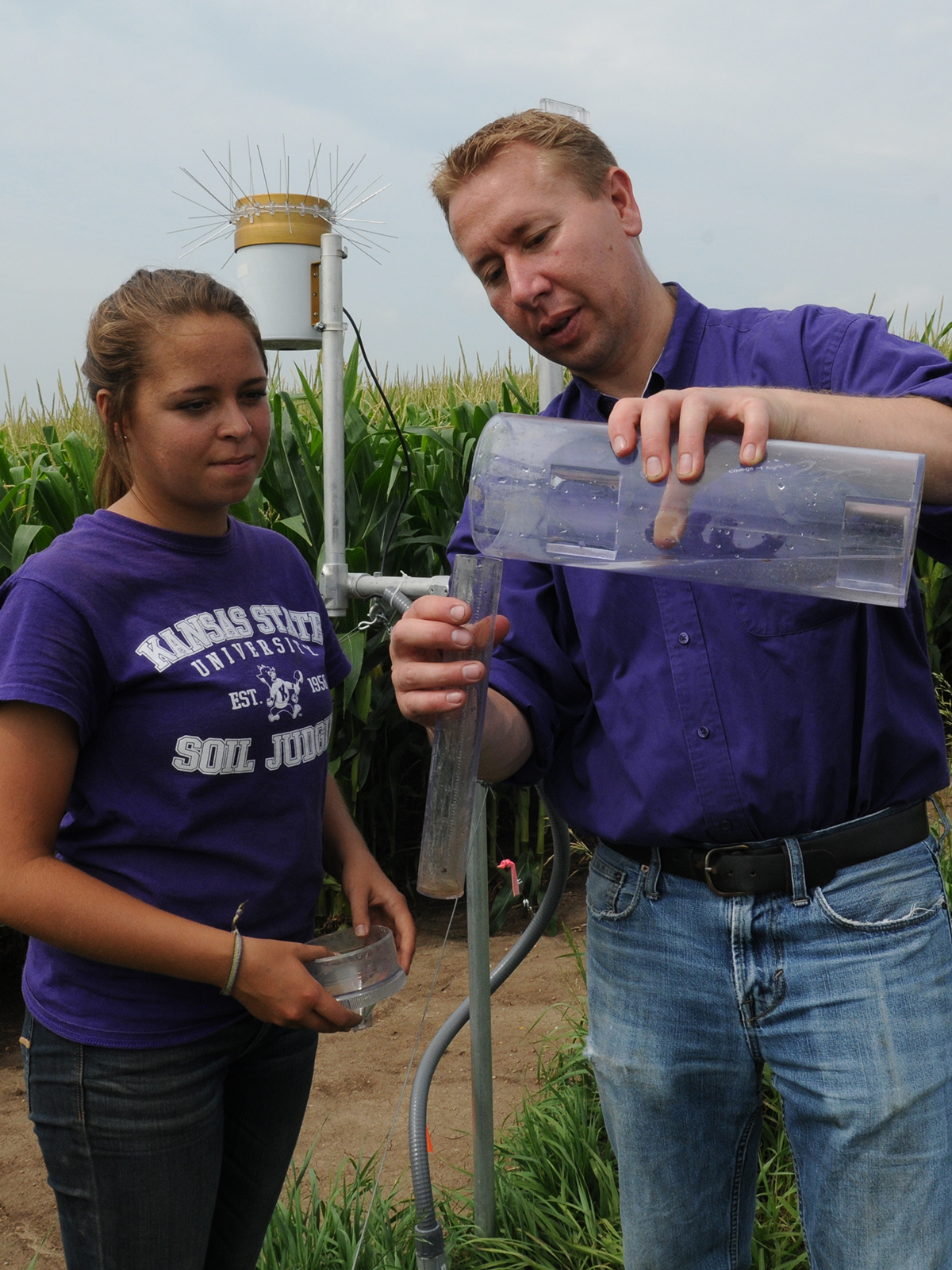Result for: Crops: Corn for grain Corn for silage Soybeans 4R Practices: Time Place
Minimizing Phosphorus Loss with 4R Nutrient Stewardship and Cover Crops

Dr. Nathan Nelson
Lead Researcher:
Dr. Nathan Nelson
Professor
Kansas State University
Start Date: 2014
End Date: 2019
Project Summary
Fertilizer timing and placement can have large impacts on P loss. Currently recommended BMPs have focused on sub‐surface fertilizer placement as the recommended method for reducing P loss. In contrast, economic and farm management factors may encourage producers to use surface‐broadcast P applications in the fall. Weather patterns typical of the Great Plains indicate that a shift to fall applications may also reduce P loss from surface applied P fertilizer compared to spring surface applications. We need field-scale data comparing P loss from fall surface applied P fertilizer to sub‐surface spring‐applied P fertilizer so we can make accurate recommendations for the right timing and placement combinations to minimize P loss.
Furthermore, cover crop use may protect against potential increased P loss associated with fall surface‐applied fertilizers, thereby allowing producers wider flexibility in fertilizer management while maintaining minimal P loss. However, we need more information about the effects of cover crops on P loss and the interaction between cover crops and P fertilizer management. Because cover crops can also impact crop yields, we need comprehensive analysis that includes cover crop and fertilizer management impact on multiple agronomic, environmental, and economic factors, including grain yield, N uptake and use, and P uptake and use, input costs, gross return, net return, N and P loss, sediment loss, and runoff volume. Producers and fertilizer dealers recognize the value in this information.

